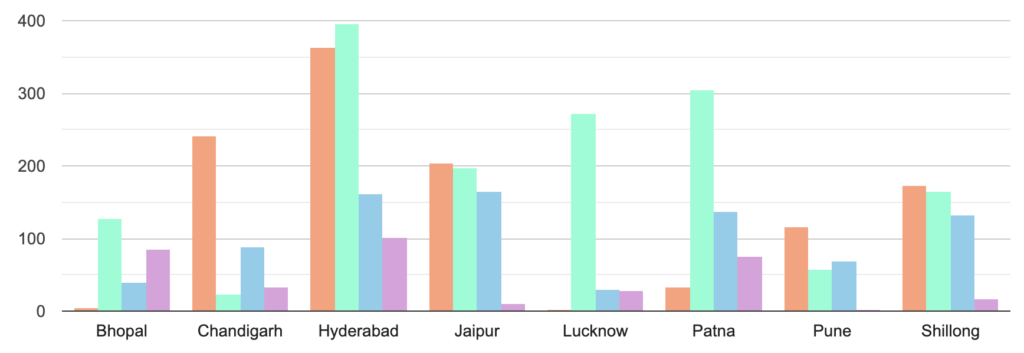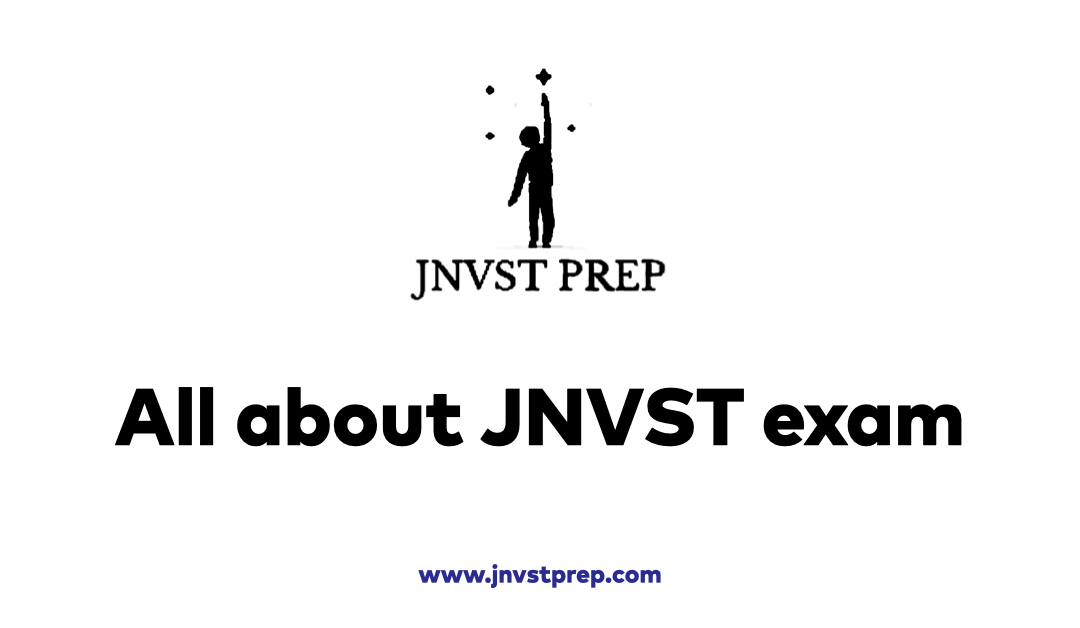What is Jawahar Navodaya Vidyalaya Selection Test (JNVST)?
JNVST, which stands for Jawahar Navodaya Vidyalaya Selection Test, is held for admission to class VI in Jawahar Navodaya Vidyalayas in 28 states and seven union territories across the country. The Navodaya Vidyalaya Samiti conducts this exam to choose the top pupils for studying at India’s JNV schools. There are currently 661 Navodaya schools spread across the country.
This screening test admits a maximum of 80 students in Class VI to each Vidyalaya. The exam is held at the beginning of the year, and the JNVST results are released by the end of May (Expected) of the admission year.
What is the JNVST Exam?
JNVST (Jawahar Navodaya Vidyalaya Selection Test)is a national-level examination conducted by Navodaya Vidyalaya Samiti, affiliated with the Central Board of Secondary Education (CBSE). Every year, the JNVST is held to select talented people from rural areas for admission to the many Navodaya Vidyalayas around the country.
Who conducts the JNVST Exam?
Navodaya Vidyalaya Samiti (NVS) conducts this exam with the Central Board of Secondary Education (CBSE).
What is the objective of Navodaya Vidyalaya Scheme?
- To provide quality education to talented children from remote areas.
- To guarantee that students have a working knowledge of three languages.
- To encourage national unity.
- To be a focal point for high-quality education in each of the country’s districts.
What are the eligibilities for JNVST Exam?
- Candidate should be from the same district: Only candidates from the district where the Jawahar Navodaya Vidyalaya has been established are eligible to apply. If the district where JNV is established is later divided, the old district limits determine eligibility for admission to JNVST if a new Vidyalaya has not been established in the newly bifurcated district.
- Age Limit: A candidate for admission cannot have been born in the years specified for that session. Candidates from all categories would be affected, including those from the Scheduled Caste (SC), Scheduled Tribe (ST), and Other Backward Class (OBC). If there is a discrepancy between the age reported on the certificate and the actual age, the case may be forwarded to the Medical Board for confirmation. The medical board’s decision will be considered final.
- Age Group: A candidate seeking admission must be within the age group of 9 to 13 years. This applies to candidates of all categories, including those who belong to the Scheduled Castes(SCs) and Scheduled Tribes (STs)
- Academic Information: A candidate claiming admission from rural quota must have studied and passed Classes- III, IV and V from a Govt./Govt. Aided/ recognised school spending one full academic session each year in a school located in a rural area.
- Urban Area Criteria: A candidate who has studied in a school located in an urban area, even for a single day of a session in any of the III, IV or V, will be considered an Urban area candidate. Urban areas are notified in the 2011 Census or through a subsequent Government Notification. All other sizes will be considered as rural.
- Should be studying in Class 5: A candidate not promoted and admitted to Class V is not eligible to apply.
- Reparation is not allowed: No candidate is eligible to appear in the JNV Selection Test for a second time under any circumstances.
Reservation for Rural, SC/ST, OBC, Girls & Disabled Children
- At least 75% of the seats in a district are filled by candidates selected from rural areas, and the remaining seats are from urban areas.
- Reservation of seats in favour of children belonging to Scheduled Castes and Scheduled Tribes is provided in proportion to their population in the district concerned, provided that in no section such reservation will be less than the national average (15% for SC and 7.5% for ST) but subject to a maximum of 50% for both the categories (SC & ST) taken together. These reservations are interchangeable and over and above the candidates selected under open merit.
- 27% reservation shall be provided to the OBC students over and above the reservation of SCs and STs. The reservations to the OBC students shall be implemented as per the Central List, as applicable occasionally. The OBC candidates not included in the Central list would apply as General Candidates.
- Girls fill a minimum of One-third of the total seats.
- There is a provision for reservation for ** Divyang children (i.e. Orthopedically Handicapped, Hearing Impaired and Visually Handicapped) as per Government of India (GOI) norms.
1. “Blindness” refers to a condition where a person suffers from any of the following conditions, namely:-
The total absence of sight or Visual acuity not exceeding 6/60 or 20/200 (Snellen) in the better eye with correcting lenses or Limitation of the field of vision subtending an angle of 20 degrees or worse.
2. “Hearing Impairment” means loss of sixty decibels or more in the better ear in the conversational range of frequencies.
3. “Locomotor disability” means disability of the bones joints or muscles leading to substantial restriction of the movement of the limbs or any form of cerebral palsy.
4. “Person with a disability” means someone suffering from not less than forty per cent of any disability as certified by a medical authority.
Get full insights on JNVST Exam Reservation Criteria in this blog.
Why JNVST is Crucial for Rural Talent Development
The Jawahar Navodaya Vidyalaya Selection Test (JNVST) is more than just an entrance exam; it plays a pivotal role in bridging the educational gap between urban and rural India. With over 70% of India’s population residing in rural areas, the exam offers an unparalleled opportunity for children in these regions to access quality education, which is often limited in such areas. By ensuring that a significant portion of seats are reserved for rural candidates, JNVST promotes inclusivity and nurtures talent that might otherwise remain undiscovered. This initiative aligns with India’s broader educational goals of fostering diversity, equality, and innovation at the grassroots level, helping to shape the next generation of leaders from all corners of the country.
How do I get a JNVST application form?
Till 2019, JNVST Exams were filled offline. In 2019, NVS started the online application process. You can fill out the form for your child without any cost by visiting this link: Click Here
In due order, the admission cards will be made accessible per NVS’s decision, which will be displayed on the application portal. Before the JNVST, candidates/parents can download their admit cards for free.
JNVST Exam – An Overview
| Name of the examination | Jawahar Navodaya Vidyalaya Selection Test (JNVST) |
| Article category | JNVST |
| Exam Type | NVS Entrance Exam |
| Conducting Authority | Navodaya Vidyalaya Samiti |
| Admission to Class | For class VI, IX and XI |
| Mode of examination | Offline (OMR-based) |
| Article Category | Pan India |
| Medium of examination | Any out of 21 languages |
JNVST Class 6th Exam Pattern (Latest)
| Subject | Questions | Marks | Duration (min) | Weightage |
| Mental Ability | 40 | 50 | 60 | 50% |
| Arithmetic | 20 | 25 | 30 | 25% |
| Language | 20 | 25 | 30 | 25% |
| Total | 80 | 100 | 120 |
Statistics about JNVST Exam (Source: NVS)





Important Link
| JNVST Class 6 Online Registration | Click here for Class 6 Registration |
| JNVST Class 9 Online Registration | Click here for Class 9 Registration |
| JNVST Class 11 Online Registration | Click here for Class 11 Registration |
| Student Login | Click for login |
| Get Your Registration Number | Click to find |
| Student Home Page | Click to go |
| JNVST Class 6 Result 2025 | Check result |
| JNVST Class 9 Result 2025 | Check result |
| JNVST Class 11 Result 2025 | Check result |
| Download Prospectus for Class 6 | Download |
| Download Prospectus for Class 9 | Download |
| NVS Official Website | Go to the official website |
FAQs
What are important subjects for class 6th?
The list of subjects for class 6 is Mental Ability, Arithmetic, and Language.
Is there any provision for negative marking?
No, there is no negative marking in the examination. Candidates should try to attempt all the questions in the exam.
How to check the JNVST Syllabus for class 6?
JNVST Class 6th syllabus can be accessed through this article. Candidates can also get it from the official portal of NVS. Candidates can find it in the admission brochure.
In how many languages JNVST Class 6th exam is conducted?
JNVST Class 6th exam is conducted in 21 different languages which include- Assamese, Bodo, Bengali, English, Gujarati, Garo, Hindi, Kannada, Khasi, Malayalam, Marathi, Mizo, Nepali, Odia, Punjabi, Manipuri (Bangla Script), Manipuri (Meitei Mayek), Tamil, Telugu, and Urdu.


Excellent article. I certainly appreciate this website. Stick with it!
Everything is very open with a really clear description of the issues. It was definitely informative. Your website is useful. Thank you for sharing!
Pls update syllabus for call 6th
Hi Faiz,
Syllabus has been already uploaded on our website:
Class 6 Syllabus: Click here
Class 9 Syllabus: Click Here
And the syllabus is upto date for 2024.
Thanks. I hope you got your answer here.
Sir my son now second class and he how can prepared this exam .im not rich family person so my son need good education I hope yours helping me how can admission there I’m waiting ur answers
Hi Vineet ji,
Abhi apka son second class me hai to abhi usko 3rd aur 4th class ache se krne dijiye, jab wo 5th class me aa jaye tb ap usko tyari kraiye. Ap online tyari bhi kra skte hain aur hamara platform puri tarah se free hai yha pr ap tests aur mock tests attend kara sktein hai apne son se.
Lekin mera recommendation yahi hai ki abhi ap usko 2nd, 3rd & 4th class ache se pdne dijiye 5th class me ate hi tyari shuru kra dijiye.
Thank You.
My son adaar addressed with nalogonda district
But studied 1-5 class in Sangareddy
Whether he was eligible for jnv exam how pl
Hello Srinivas Ji,
Yes your child is eligible for JNV Exam from the same district from which he studies 1-5.
Thanks.